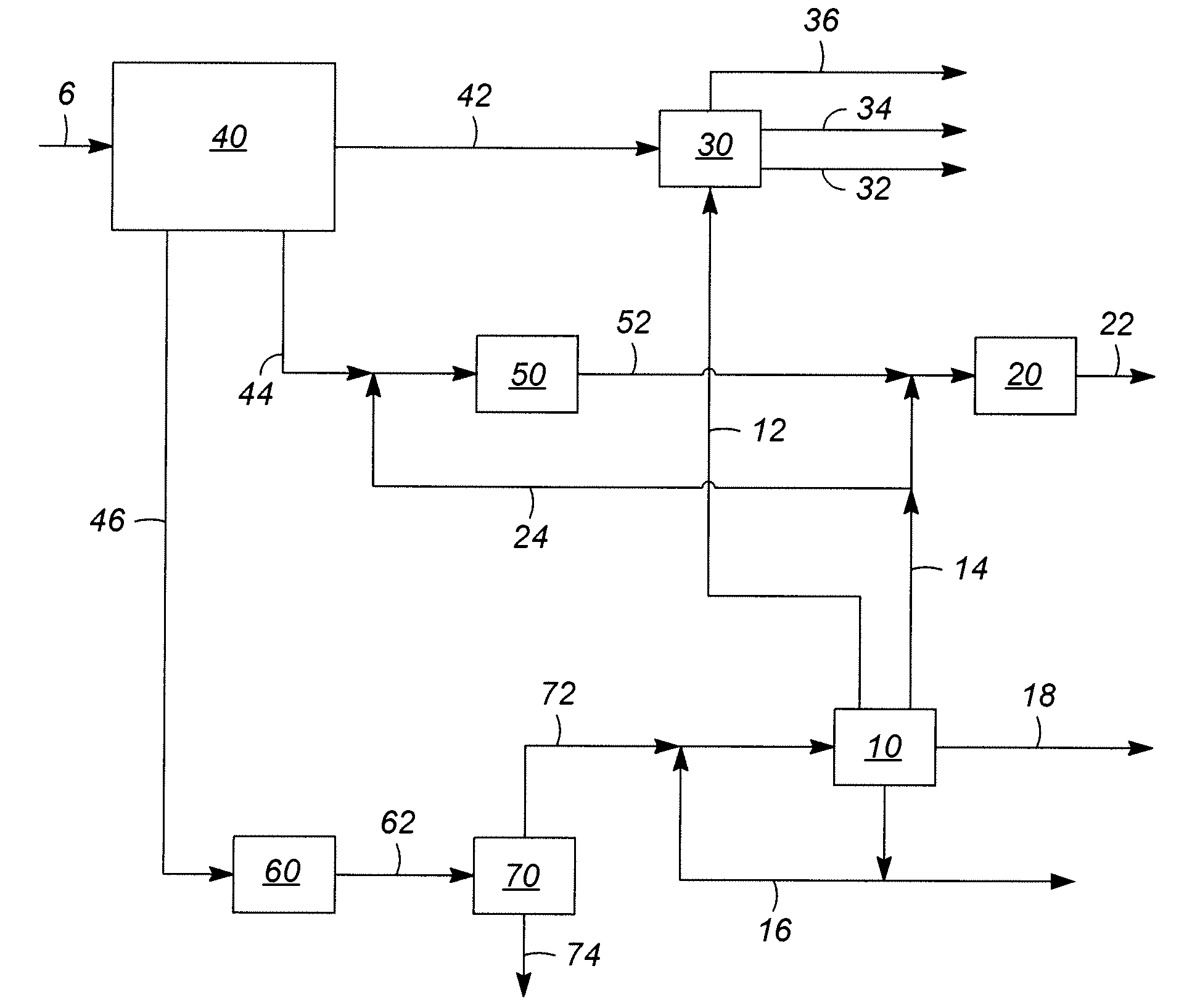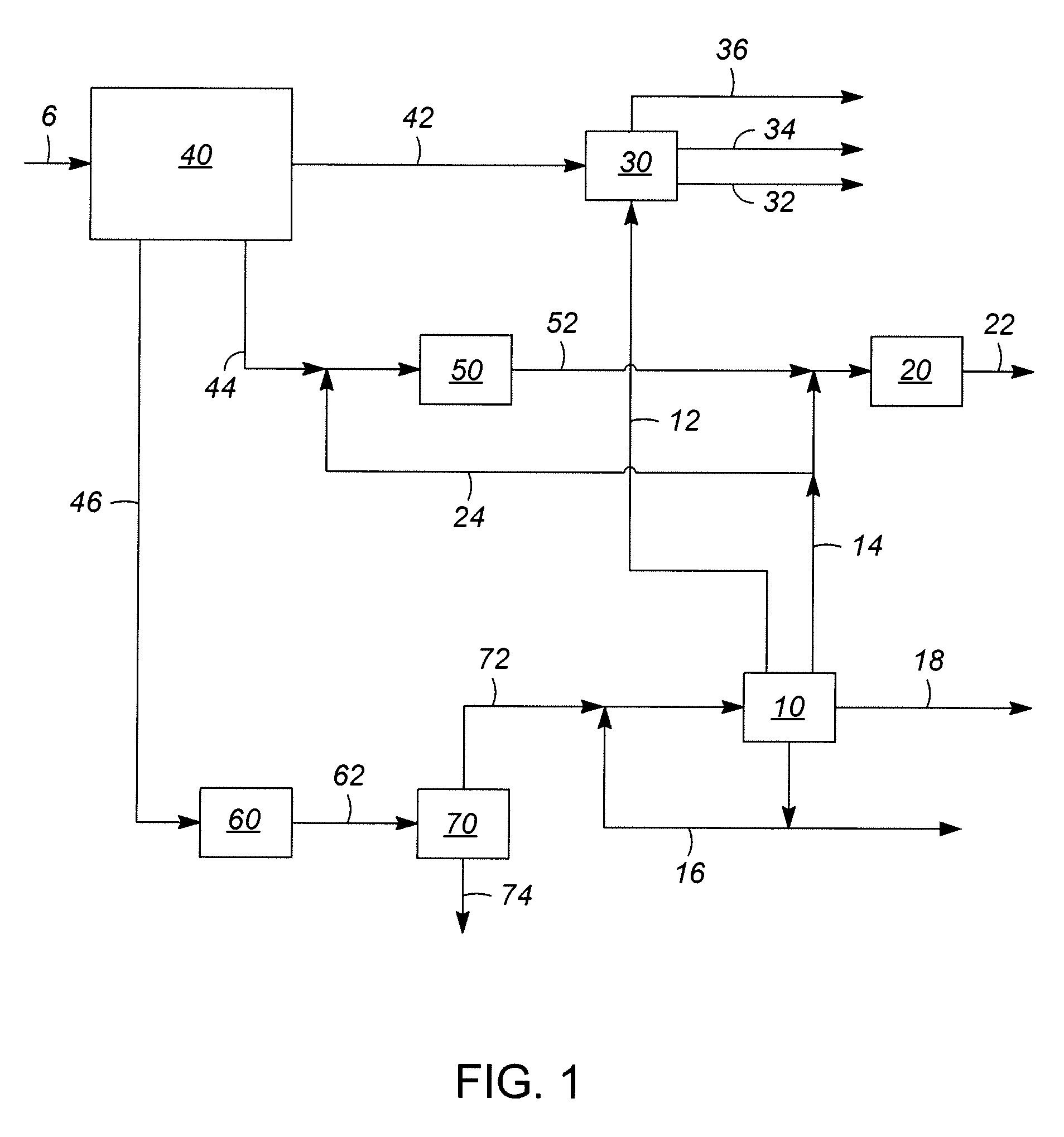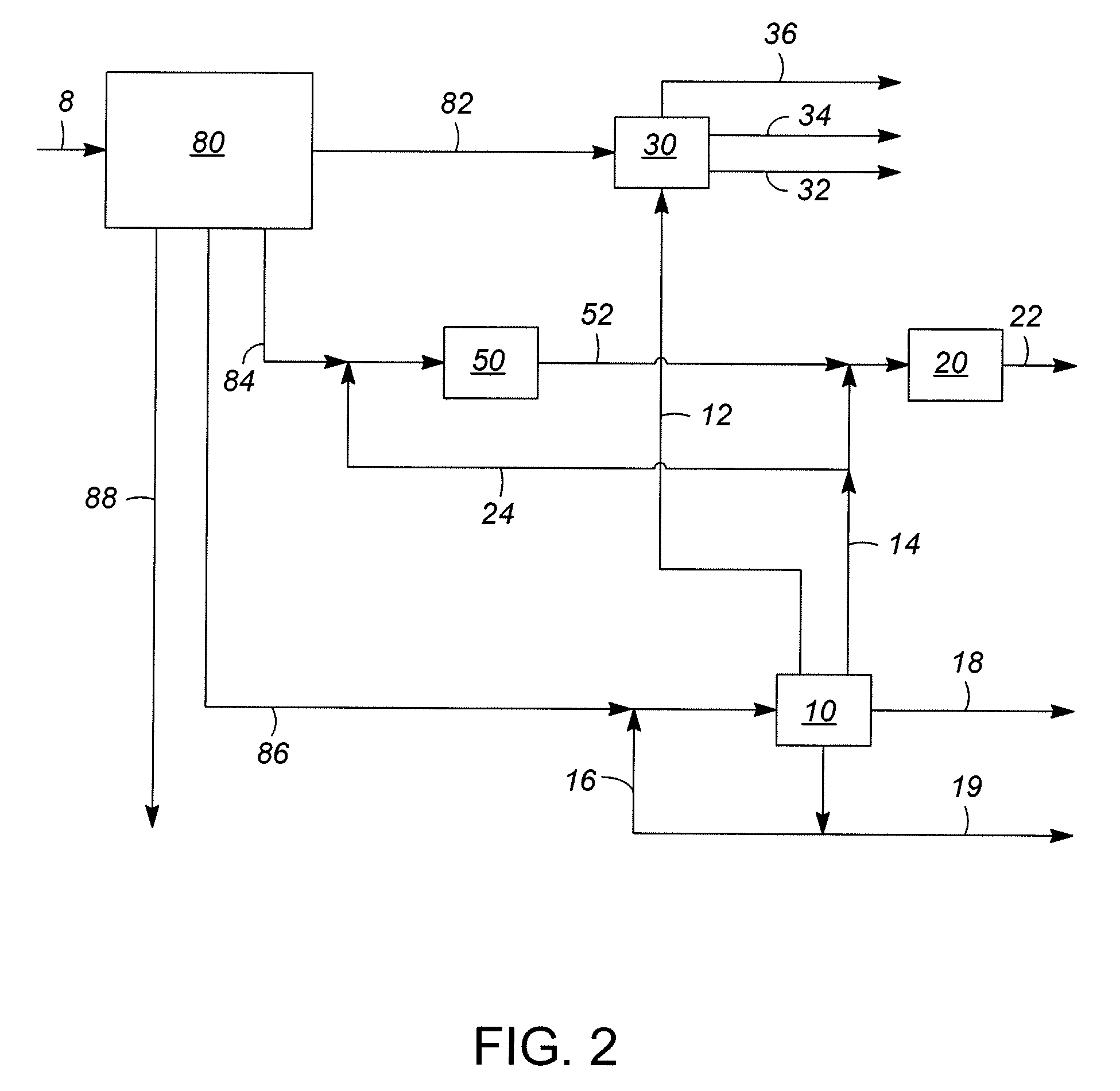Use of Olefin Cracking to Produce Alkylate
a technology of olefin cracking and alkylate, which is applied in the direction of alkylation treatment, hydrocarbon metathesis reaction, organic chemistry, etc., can solve the problems of oxygenates and “knocking” of internal combustion engines, and achieve high-quality product streams and increase alkylate amounts.
- Summary
- Abstract
- Description
- Claims
- Application Information
AI Technical Summary
Benefits of technology
Problems solved by technology
Method used
Image
Examples
Embodiment Construction
[0010]Olefin cracking (OC) technology was developed to convert larger (C4+) olefins to ethylene and propylene. However, in the OC process, butenes are produced which can be separated out or recycled for further cracking. The quantity of butenes produced in the olefin cracking process (OCP) can be has high as 40 wt % based on the total olefins fed to the OCP. Usually, butenes are recycled to be further cracked to produce ethylene. Olefin cracking technology was developed to work with other processes, such as a naphtha cracker, or a fluidized catalytic cracker (FCC), where heavier olefins, C4 to C8 olefins, were separated from the product stream and routed to the olefin cracker to increase ethylene and propylene production.
[0011]Likewise, naphtha crackers are designed for producing ethylene and propylene through cracking of larger gasoline range paraffinic and naphthenic molecules to generate an olefin stream rich in ethylene and propylene, and other by-products. The by-products inclu...
PUM
| Property | Measurement | Unit |
|---|---|---|
| temperature | aaaaa | aaaaa |
| temperature | aaaaa | aaaaa |
| pressure | aaaaa | aaaaa |
Abstract
Description
Claims
Application Information
 Login to View More
Login to View More - R&D
- Intellectual Property
- Life Sciences
- Materials
- Tech Scout
- Unparalleled Data Quality
- Higher Quality Content
- 60% Fewer Hallucinations
Browse by: Latest US Patents, China's latest patents, Technical Efficacy Thesaurus, Application Domain, Technology Topic, Popular Technical Reports.
© 2025 PatSnap. All rights reserved.Legal|Privacy policy|Modern Slavery Act Transparency Statement|Sitemap|About US| Contact US: help@patsnap.com



